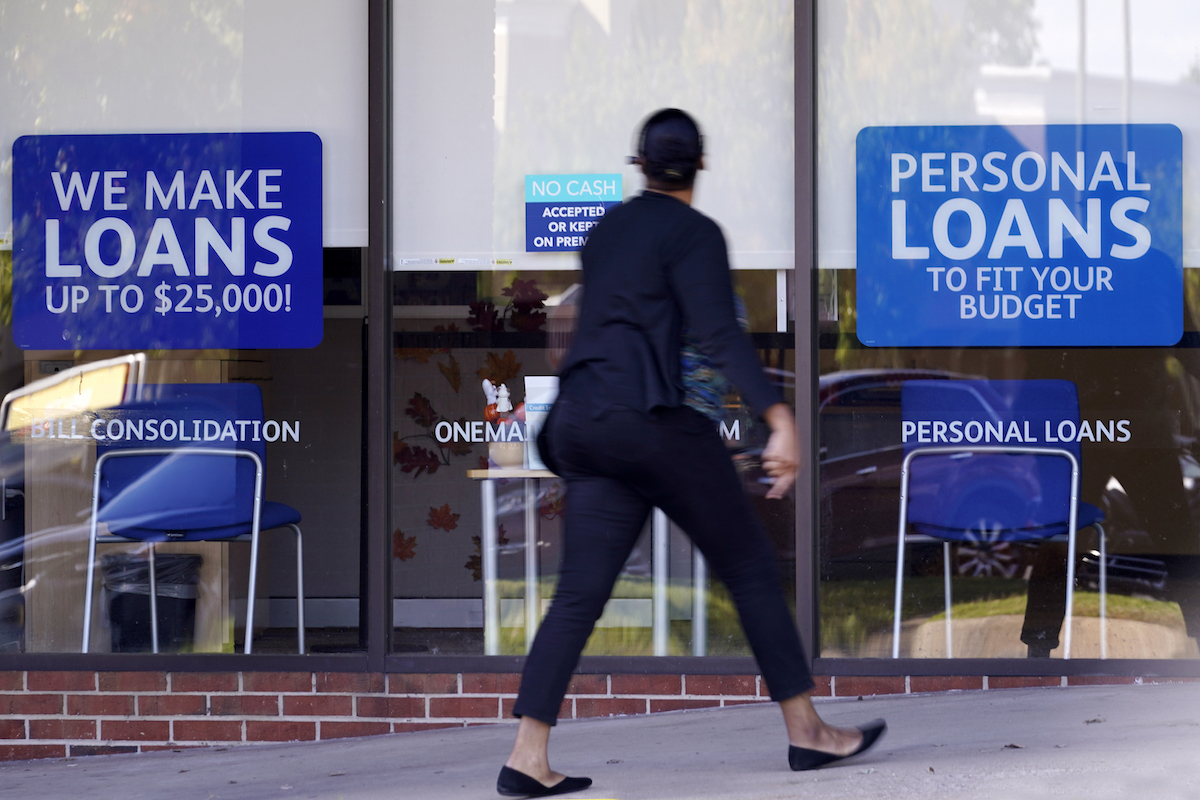In a big week for economic reports, one of the biggest is set to be released on July 28: The first look at how much the nation’s second-quarter gross domestic product grew or shrank.
The nation’s GDP already fell by 1.6% in the first quarter of 2022, so if it falls for a second straight quarter, there will be growing calls to declare that the U.S. is a recession — adding to President Joe Biden’s litany of economic woes, which already include 40-year-high inflation and the worst consumer confidence levels in years.
In the face of expected Republican attacks on Biden’s economic competence, the White House has tiptoed around the r-word.
“A common definition of recession is two negative quarters of GDP growth, or at least that’s something that’s been true in past recessions,” Treasury Secretary Janet Yellen said on NBC’s “Meet the Press” on July 25. “So we could see that happen. And that will be closely watched. But I do want to emphasize: What a recession really means is a broad-based contraction in the economy. And even if that number is negative, we are not in a recession now.”
The debate over how to define a recession has spawned a lot of confusion.
Yellen is correct that the official definition economists use is significantly broader than the two-consecutive-quarters shorthand.
At the same time, arguing over the technical definition of whether the U.S. is in a recession is a distraction, economists say.
In today’s economy, so many indicators are off-kilter because of the pandemic that old rules like the two-quarters rule may no longer apply. Still, there are plenty of reasons to be concerned about the economy even without calling it a recession right now. One could come soon enough.
What is the official definition of a recession?
The two-quarter rule gained a foothold because of its simplicity for the public, news outlets, and politicians, said Ernie Goss, a Creighton University economist.
But officially, the only recession arbiter is the National Bureau of Economic Research’s Business Cycle Dating Committee. The committee has been marking the start and end points of recessions since the late 1970s.
The publicity-shy panel has been chaired since 1978 by economist Robert Hall of Stanford University. It includes other economists from Harvard, Princeton, Northwestern, the Massachusetts Institute of Technology, the University of California, Berkeley, and the University of California, San Diego.
The committee deliberates privately, but it is open about what factors it uses to determine the start of a recession, namely “a significant decline in economic activity that is spread across the economy and that lasts more than a few months.” Every recession requires “depth, diffusion, and duration” of economic hurt.
The committee’s website — last updated a year ago, well before the current debate — addresses the two-quarters rule head-on. The committee notes that it has sometimes classified periods as recessions even if they did not involve two consecutive quarters of negative growth, such as the 2001 dot-com bubble recession. The 2020 pandemic recession lasted just two months — not even enough to produce a full quarter’s worth of data.
The committee says it weighs a variety of factors, including inflation-adjusted personal income, nonfarm payrolls, household employment data, inflation-adjusted personal expenditures, inflation-adjusted manufacturing and trade sales, and industrial production.
In a recent interview with NPR’s Planet Money, a former committee member, Harvard economist Benjamin Friedman, argued that the committee’s more holistic approach is superior to an inflexible definition like the two-quarters standard.
“If you had a question about your personal physical health, for example, and you went to the doctor, and the doctor said, ‘Well, Mary, we have taken your temperature, and your temperature is 98 point whatever, and that’s the only thing it’s worth looking at,’ I’m guessing you’d get another doctor very quickly,” he said. “We are fortunate to have many, many measures of economic activity.”
The biggest shortcoming of NBER’s system is that it isn’t done in real time. The fastest determinations have occurred about four months after a recession’s start; the slowest have come 21 months later.
As a result, the public and news outlets have latched onto the two-quarter rule, because it’s easy to determine in real time, even if it’s not official. And it does have a good historical track record of lining up with recessions.
“There has never been an occasion in which GDP contracted for two consecutive quarters and a recession was not eventually declared,” said Sean Snaith, director of the University of Central Florida’s Institute for Economic Forecasting.
Why to be wary of the two-quarter rule
Most of the dozen economists PolitiFact contacted cautioned against overreliance on the two-quarter rule. Here’s why:
The first data to be released is only preliminary. All economic data gets revised in subsequent months, as more information is collected. This can turn an initial negative number into a positive one, or a positive number into a negative one. That either the first or second quarter numbers could flip in the opposite direction poses a hazard to a rigid two-quarter rule.
Using the two-quarter rule “would be premature at best, and perhaps incorrect,” Friedman, the former NBER committee member, told PolitiFact. “GDP data are revised — sometimes by a lot — after the fact. That’s the reason the NBER looks at a much broader and more granular base of data.”
The most recent economic GDP data contains some complications. GDP fell in the first quarter by 1.6%, but economists say this may have been misleadingly negative, due to how inventories and trade data are factored in.
Other data within the GDP figure — notably on residential investment and durable goods consumption — may be more important, because “forward-looking consumers get balky about making big ticket purchases if they are nervous about future economic conditions,” said Ryan D. Ratcliff, a University of San Diego economist. And the first-quarter figures in these areas were “weak but positive,” Ratcliff said, which suggests that a recession has not arrived, at least not yet.
Notably, a separate statistic — gross domestic income, or GDI — rose at a 1.8% annual pace over the same quarter. In theory, GDP and GDI are supposed to be equal, and economists scrutinize any differences for clues to shortcomings in the economy. The NBER committee uses both GDP and GDI in its recession-dating debates.
Considering GDP alone overlooks other important economic data points. The unemployment rate remains historically low at 3.6%, nonfarm payroll employment continues to rise robustly, and most of the recent payroll growth has been in full-time as opposed to part-time jobs, said Brookings Institution economist Gary Burtless. Consumer spending also continues to chug along, despite high inflation.
Other forecasting metrics suggest a recession is not necessarily underway. Economist Claudia Sahm’s “Sahm Rule recession indicator” has reliably projected recessions based on changes in the national unemployment rate, and it is far from the danger zone now, said Tara Sinclair, a George Washington University economist. Another predictive method, known as “Smoothed U.S. Recession Probabilities,” has been accurate historically and currently shows no recession.
The postcoronavirus era is shattering all kinds of assumptions about the economy. The pandemic has been such an upheaval that there’s no reason to believe that a rigid standard like the two-quarter rule is still valid, said Rajeev Dhawan, director of the economic forecasting center at Georgia State University.
“We don’t know how often people will be working from home going forward,” he said. “Business dining is not back, but personal dining is off the charts.’”
Having to change recession assumptions during times of transition is hardly a new phenomenon, Dhawan said. In the 1970s, when manufacturing was a bigger driver of the U.S. economy, recession forecasting was driven by changes in industrial production. By the 1990s, the economy’s drivers changed, and so did the methods to determine recessions.
Given the pandemic’s impact, “we will probably have to come up with a new rule,” Dhawan said.
One wild card now is that there are more than 11.2 million job openings, or more than twice the level before the 2001 and 2008 recessions. This could allow companies to scale back employment by leaving vacancies unfilled, rather than by laying off existing employees. This would throw off the standard assumptions about rising unemployment during recessions, Snaith said.
Meanwhile, some economists say that even if we are not currently in a recession, there’s plenty to worry about.
Despite low unemployment and healthy consumer spending, Americans understandably feel uneasy about the economy when they see daily their costs rising and their 401(k) valuations sinking.
It may be impossible to stop the partisan rhetorical crossfire over the definition of a recession, but economists warn against hasty conclusions.
“It’s important to know what the economic conditions are in order to recommend appropriate policy responses,” Sinclair said. “A demand-driven recession could be addressed with stimulus spending to increase demand, but that’s the wrong approach if what’s really plaguing the economy is still the high inflation.”
This article was originally published by PolitiFact, which is part of the Poynter Institute. It is republished here with permission. See the sources for this story here and more of their fact checks here.







